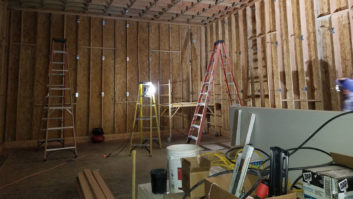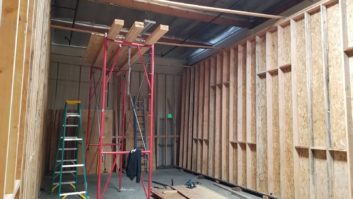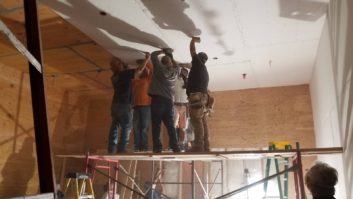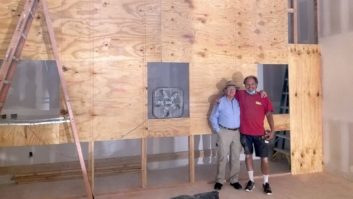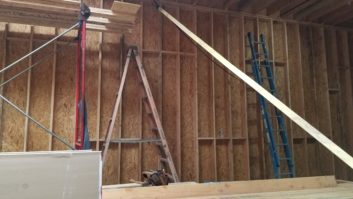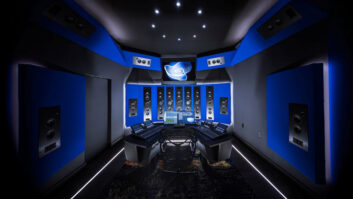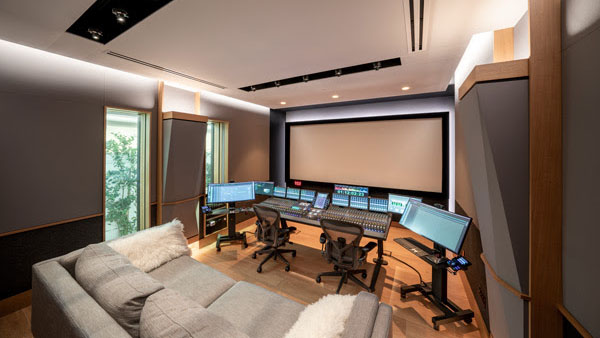
In the early months of the pandemic, Fred Paragano decided it was time to “bring it all back home” and invest in a world-class studio for his own use, in his own home. He wanted a versatile space, a room that would accommodate everything from stereo music to full Dolby Atmos mixes for theatrical release. With that in mind, he called noted studio designer Russ Berger, then dialed Meyer Sound. By late 2022, the facility was open for business.
Paragano, a supervising sound editor and re-recording mixer, arrived in Los Angeles nearly a decade ago after a long and successful run in Nashville, where he owned and operated the multi-room Paragon Studios. His credits over the years include film and television work on Amsterdam, The Addams Family, Westworld and Patsy & Loretta, among many others, along with music mixing on albums by Livingston Taylor, Michael W. Smith, Amy Grant and Kenny Loggins.
“Over the years, my work had shifted predominantly to film and TV post, so it only made sense to relocate to Southern California since that’s where most of my business was coming from,” he says.
After eight years of working out of various facilities in and around Los Angeles, however, he suddenly found himself at home and decided the time was right to change things up. By mid-2020, Berger had begun drawing up plans, and two spare bedrooms were gutted to open space for a 21-feet-long by 15-feet-wide main mixing room. He had already decided that he wanted to incorporate a Meyer Sound monitor system, though he assumed it would be the Acheron series for the screen channels.
“When I said I was going with Meyer Sound, Russ insisted I check out Bluehorn,” Paragano recalls. “He thought that if I were going to build a facility of this caliber, I needed to complement it with monitors at the same level.”
Paragano freely admits that he had not previously heard of Bluehorn, but he made a point to audition systems at L.A.-area facilities, including at the renowned Newman Scoring Stage at Fox Studios. What he heard cemented his decision to follow Berger’s recommendation.
“It was a leap of faith since there are still relatively few systems out there,” Paragano says. “However, everyone who comes in here is immediately blown away by what they hear, just as I was. The whole system just breathes. It never feels like it is working hard.’”
Greg Miner Builds His Dream Complex, Philharmonic Studios
Currently, the room is a 7.1.4 configuration, with prewiring for 9.1.6 expansion if desired. The three full-range Bluehorn monitors anchor the front channels, mounted over three X-400C cinema subwoofers dedicated to the LFE channel. The lateral and overhead surround channels each employ four Ultra-X23 compact loudspeakers, with two USW-210P compact narrow subwoofers in the ceiling for surround bass management. All loudspeakers are concealed behind acoustic fabric.
The Bluehorn System has its own dedicated Galaxy processor, with a secondary Galileo Galaxy 816 Network Platform handling all the surround processing. “The cool thing about Galaxy is that I can have multiple setups,” notes Paragano. “I can have one for theatrical Atmos, one for home Atmos and one for music mixing. I can easily call up what I need with the touch of a button.”
The studio is reserved exclusively for Paragano’s own projects, though clients and colleagues often come in to listen—and to experience the Bluehorn System monitors. “It’s fascinating to see the expressions on their faces,” he says. “They immediately get excited about what they are hearing.”
Other equipment in the studio includes five main computers, with three dedicated to Pro Tools | HD, a fourth for Atmos rendering and a Mac Mini solely dedicated to I/O routing for the entire system. Also included are three Avid MTRX interfaces, three Avid Sync Xs synced to an Antelope OCX clock, and a Brainstorm DXD- 8 multi-format reference generator.
“The intent of building the studio was to do most of the heavy lifting on my part here, so it was critical that my mixes translate accurately when finishing elsewhere,” says Paragano. “I’ve found that, with Bluehorn, when I go to a larger stage my mixes translate exactly as expected. I don’t have to spend any time fixing or compensating. We’re up and running right away, and we can start being creative.”
